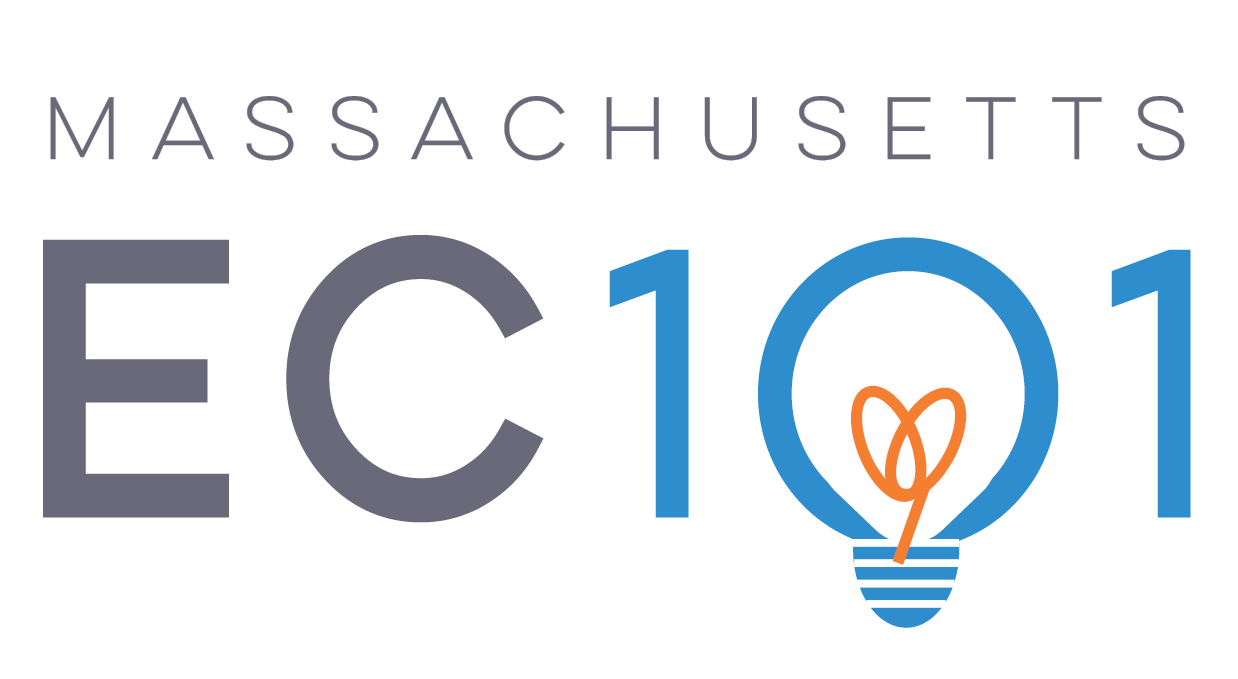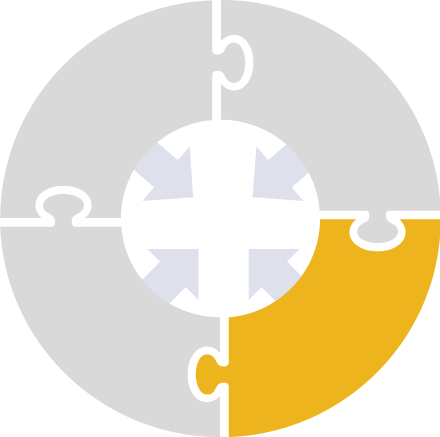
Glossary
-
Access Gap
"The difference between the total number of formal early education and care seats (potential supply) and the number of children birth to 5 years of age (maximum potential demand) in a given geographical location, assuming all of these families would desire formal care near their homes." (Source: Boston Opportunity Agenda report: (Re)Building Boston’s Early Education and Care Sector)
-
Adult-Child Ratio
The number of qualified early childhood educators working with a given group of children within a licensed childcare program. For example, an adult-child ratio of 2:10 means that there are 2 adults for every 10 children. In determining the regulatory adult-to-child ratio, the ages of children are considered as well as the qualifications of the educators (EEC Chart)
-
Affordability
The degree to which the price of child care is reasonable for families as an expense. It is widely accepted that U.S. child care is considered "affordable" if the monthly cost is below 7% of the household's monthly income (Bipartisan Policy Center). However, states maintain different definitions of "affordable" based on family income, subsidy acceptance, and other factors.
-
Ages and Stages Questionnaire (ASQ)
Provides developmental and social-emotional screening for children between birth and age 6. The tool is designed to be administered by parents.
-
B - 5
Birth to 5 Years Old
-
Birthing Parent
Someone who gave birth to their child. It is a more inclusive term than "mother" as it refers not only to cisgender women but also transgender parents, non-binary parents, LGBTQ+ parents, or other parents who can carry and birth children.
-
Broken Child Care Market
The current child care market is often characterized as "broken" because there is a misalignment between the cost of providing care and the amount of money that families are willing and able to pay for that care. In 2022, MA families spent on average $20,913 for infant care. However, these high fees are necessary for providers to "break even" on the cost of operating their businesses. Concurrently, the child care workforce is grossly underpaid. In 2019, child care workers in MA had a median income of just $27,680 per year. Because many child care providers operate with thin financial margins, raising workers' wages would require them to charge families more for care, adding to the affordability crisis.
-
Center-Based Child Care
Care provided in a group setting, typically in a non-residential building.
-
Child Care
Care and supervision for a child (or group of children) by a person or people other than the child's parents or legal guardian.
-
Child Care and Development Block Grant (CCBDG)
A federal law that created the Child Care and Development Fund Program (CCDF). It provides the discretionary funding to the CCDF program to provide child care.
-
Child Care and Development Fund Program (CCDF)
A federal and state partnership program authorized under the Child Care and Development Block Grant Act (CCDBG) and administered by states, territories, and tribes with funding and support from the Administration for Children and Families’ Office of Child Care. Nationwide, it includes more than $9.7 billion in federal funding. States, territories, and tribes use CCDF to provide financial assistance to low-income families to access child care.
-
Child Care Deserts
Geographic areas in which there are too few licensed child care slots in comparison with the number of children living in the area.
-
Child Care Provider
An entity (an individual, nonprofit, or company) that provides child care. The term “child care provider” can refer both to a particular person (e.g., the owner of a family day care) or to a larger entity (e.g., a child care center).
-
Child Care Financial Assistance
Financial assistance provided to families to help cover the costs of licensed in-home or center-based child care. Families eligible for financial assistance include: families with active child protection cases referred by the Department of Children and Families; families receiving TAFDC or SNAP benefits referred by the Department of Transitional Assistance; and families meeting a certain income and service need (activity) requirements. To meet the income requirement, household income must be at or below 50% of the state median income upon entry and may not exceed 85% of the state median income.
-
Child Care Resource and Referral Agency (CCRR or CCR&R)
Local non-profit agencies that contract with EEC to administer the state’s child care financial assistance system. These regional organizations handle subsidy eligibility and authorization and help families find child care that suits their needs.
-
Child Care Slots
Openings or “seats'' available at a given child care program, typically based on their licensed capacity. For example, if a child care center has a capacity of 19 children, they have 19 child care slots in total.
-
Child Tax Credit
A federal tax credit that gives families money on a per-child basis. With new federal funding under the American Rescue Plan (a COVID relief measure passed in March 2021), the tax credit amount for children under 6 went from $2,000 to $3,600. However, the expanded credit expired and reverted back to $2,000 per child in 2022.
-
Commonwealth Cares for Children (C3) Grants
Grants awarded by EEC to support child care providers' day-to-day operational and workforce costs. All licensed child care providers in MA are eligible to apply for this grant, and grant awards are calculated using the Commonwealth Cares for Children (C3) formula. The C3 formula determines grant awards by considering a provider's licensed capacity, staffing, location, and number of families participating in the state child care assistance program. C3 grants were originally funded by the federal American Rescue Plan and have been renewed in the Commonwealth’s FY24 budget. Massachusetts Taxpayers Foundation has a primer on the C3 grants.
-
Commonwealth Preschool Partnership Initiative
Massachusetts grant program whose purpose is to expand high-quality preschool opportunities, modeled after the former federal Preschool Expansion Grant. The program promotes collaborations between public school districts and EEC-licensed early education programs to expand local access to high-quality preschool for three- and four-year-old children. For fiscal year 2023, there are 15 communities in MA that have CPPI funded initiatives.
-
Continuing Education
Broad term that refers to any post-secondary education that an adult pursues. Parents who have left their educational pursuits early to take care of children or who wish to go back to school to further their education can use resources such as community college programs, night school, or specialty programs. This can include one-time classes, semester-long coursework, and entire degree programs.
-
Coordinated Family and Community Engagement Networks (CFCE)
Local networks that provide child development services and referrals, such as administering ASQ screeners and offering play groups for young children. They also provide resources to parents/caregivers such as parent education, child development information, transitional assistance, parent leadership opportunities, and community resources to support parents as their child’s first teacher (EEC). Networks are supported by grants distributed by the Department of Early Education and Care.
-
Cost Estimation Model
A method for determining the true cost of operating a high-quality child care program that aligns with quality standards set by the state. The true cost includes highly trained program staff, developmentally appropriate learning environments and curricula, and adequate compensation to ensure a stable educator workforce. Unlike the "market rate" of care which describes the range of tuition charged by child care providers in the same region serving the same ages of children, a Cost Estimation Model captures the total, actual cost of providing care.
-
Daycare
(Note: This term is antiquated. Please see Child Care) Day time care and supervision for a child (or group of children) by a person or people other than the child's parents or legal guardian.
-
Developmental Assessments and Evaluation
Used to identify and diagnose developmental delays, disabilities, and other conditions that might affect a child's mental, physical, or social growth.
-
Developmental Milestones
Touchpoints in a child’s life to assess how they are progressing in a variety of capabilities including social-emotional, motor skills, language/communication and cognitive benchmarks. Skills such as taking a first step, smiling for the first time, and waving "bye bye" are all examples of milestones.
-
Developmental Monitoring
The act of systematically and periodically examining whether a child is developing appropriately for their age.
-
Developmental Screeners
Formal tools administered in healthcare and education settings. These research-based assessments and questionnaires help identify whether a child is developing typical language, movement, thinking, behavior, and emotions. Teaching Strategies GOLD (TSG) and Ages and Stages Questionaire (ASQ) are examples of a developmental screener tool.
-
Diagnostic Classification of Mental Health and Developmental Disorders of Infancy and Early Childhood (DC: 0-5)
A guide that mental health professionals use to identify and diagnose mental health and developmental disorders in infants, toddlers, and young children up to age five.
-
Early Childhood Integrated Data System (ECIDS)
A system that integrates and reports data and information from early childhood services and programs that span across multiple state agencies. Currently Massachussetts is building a statewide ECIDS system to link data from the Department of Early Education & Care, Department of Elementary & Secondary Education and Department of Public Health.
-
Early Childhood Mental Health (ECMH)
The developing capacity, embedded in the context of a child’s family, community, and cultural expectations to regulate, and express emotions; form close relationships; and explore their environment.
-
Early Childhood Mental Health Consultation Network
"Helps educators support the social-emotional development and behavioral health needs of young children in EEC-licensed or funded programs. ECMH consultants also connect programs and families to additional behavioral health services in the community." (EEC)
-
Early Childhood Professional(s)
Anyone who work with young children (birth - 5 years old) in all early childhood sectors including care, education, social services, and health.
-
Early Education & Care
A broad term referring to both child care services and educational/academic programming for young children. Before- and after-school programs, summer camps, and extended learning opportunities typically fall under the umbrella of early education and care.
-
Early Head Start
A federally-funded program which supports low-income pregnant people, infants, and toddlers under three years of age. Services include prenatal support, home visits to promote child development, and center-based care for infants and toddlers.
-
Early Intervention
Supportive services offered to children under 3 who are not meeting age-appropriate developmental benchmarks in social and emotional skills, cognition, motor skills, and language and communication.
-
Early Intervention Cliff (EI Cliff)
The gap that exists for some families when EI services end at age 3 and Special Education (SPED) services provided by K-12 school districts should begin. Often these two systems don't coordinate or communicate and families are left to navigate how to access SPED services on their own once EI services end.
-
Early Relational Wellbeing
A framework that explores the role of early relationships and experiences in healthy development across a child’s lifetime. Relationships, especially in the early years, are biological necessities to build a foundation for lifelong growth and development.
-
Emergency Aid to the Elderly, Disabled and Children (EAEDC)
A state funded program that provides monthly cash assistance to children who do not qualify for TAFDC because they are not being raised by a parent or close relative. Children receiving EAEDC are automatically given MassHealth coverage.
-
Family, Friend, and Neighbor Care (FFN)
Informal child care provided by a family member, friend, or neighbor, often in the child's or caregiver’s home. Unlike in some other states, in Massachusetts FFN care is not licensed.
-
Family Child Care (FCC)
Child care programs where a child care provider cares for children within their own home.
-
Family Child Care System/Network
These networks/systems provide administrative support to family child care providers and are typically operated by non-profit organizations. By joining a network, FCCs benefit from administrative support, training opportunities, and assistance with making referrals to outside agencies for children in their care.
-
Family Resource Centers (FRC)
Community hubs that support families by providing a range of services. In Massachusetts there are 22 FRCs that offer parent education classes, support groups, information on accessing community services, and cultural, recreational, and social programming.
-
Financial Assistance Waitlist
Families with incomes of 50% or less of the state median income are eligible for subsidized child care administered by EEC. However, there are more families in need of assistance than there are open subsidized slots. Income-eligible families are placed on a waitlist to receive a child care subsidy (voucher or contract).
-
Head Start
Federally funded child care programs and wraparound services that are available at no cost to qualifying low-income families with children aged three to to five.
-
Health Equity
A state of being in which every person has the opportunity to “attain his or her full health potential” and no one is “disadvantaged from achieving this potential because of social position or other socially determined circumstances.” (CDC)
-
Home Visit(s)(ing)
Services in which a child care or other service provider visits a family’s home. Typically, home visits are used to build relationships between parents and providers, to support bonding between a parent and child, and to check in on key indicators of child and family welfare.
-
Individual Family Service Plan (IFSP)
A written legal document created by a team of professionals once a child has been deemed eligible for early intervention services. This document is mandated by the Individuals with Disabilities Education Act and records a child’s/family's needs, goals, and outcomes from receiving specified services. This plan is similar to an IEP but for children under 3.
-
Individualized Education Plan (IEP)
A written legal document that is developed collaboratively between school personnel, other service providers, and caregivers to meet the academic and developmental needs of students with disabilities. The IEP document identifies specific goals and methods by which teachers and service providers will support students to achieve their goals. Children with disabilities are eligible for an IEP starting at age 3. The plan is reviewed annually and may follow a child throughout their educational career with yearly updates and modifications. Schools and service providers are mandated to adhere to a child's IEP by the Individuals with Disabilities Act (IDEA).
-
Infant, Toddler (IT or I/T)
Infants are babies under 1 year of age. Infants are in an early stage of development in which they often cannot yet walk independently and have limited verbal communication. Toddlers are children aged 1-3 years old. They have typically gained greater independence and stronger communication skills.
-
Infant Mortality Rate
The number of infants that die before they reach one year of age, per 1,000 live births in a given year
-
Itinerant Services
Special education services provided in-home or in a provider location. Itinerant teachers support inclusion for students with disabilities by visiting students' classrooms to provide the services outlined in their IEP. Children typically receive itinerant services begining at 3 years old.
-
Licensed Capacity
The maximum number of children allowed to be in a licensed child care program or setting at any one time. Capacity is based upon the number of children for which adequate facilities and teachers/caregivers are provided, in accordance with state ratio requirements.
-
Licensed Child Care Program
EEC issues licenses to center-based and family child care providers (including daycares, nursery schools, preschools, and pre-Ks). These licenses allow providers to access grant funds, participate in certain professional development opportunities, and accept state child care subsidies. As few as one child enrolled in a program can trigger licensing requirements.
-
Market Rate Study
EEC is required to conduct a Market Rate Study every three years in order to recieve federal child care subsidy funding via the CCDBG. These studies aggregate important information about the price of care in different regions in MA, for different ages, and in different care settings. Market rate child care fees refer to the amount of money a typical family would spend to send their child to care without a subsidy, a child care scholarship, or any other financial assistance. These studies are used to set MA subsidy reimbursement rates, however they do not take into account the true cost of providing care.
-
Massachusetts Department of Early Education and Care (EEC)
A Massachusetts state agency that oversees child care and out-of-school time care in Massachusetts. The agency manages the subsidized child care system, licenses child care and early education programs, and provides professional development for child care providers and their employees.
-
Massachusetts Department of Elementary and Secondary Education (DESE)
A Massachusetts state agency that oversees elementary and secondary education in Massachusetts. The agency handles everything pertaining to K-12 schools including education funding, state standards, teacher licensure, and school accountability.
-
Massachusetts Department of Children and Families (DCF)
A Massachusetts state agency responsible for working with families and communities to ensure children are safe from abuse and neglect. DCF manages the foster care and adoption systems and place children in supportive homes.
-
Massachusetts Department of Public Health (DPH)
A Massachusetts state agency oversees local public health authorities and sets public health guidelines and regulations.
-
Massachusetts Department of Transitional Assistance (DTA)
A Massachusetts state agency that supports low-income families by administering programs including cash assistance (TAFDC, EAEDC), food assistance (SNAP & EBT), and employment and training opportunities.
-
MassHealth
Massachusetts’ Medicaid system. Low-income people and people with disabilities who do not otherwise have access to healthcare can get health insurance coverage via MassHealth. Any child born to parents eligible for MassHealth is automatically eligible for up to one year.
-
Maternal Morbidity
Any short-term or long-term health issues for a birthing parent that result from child birth
-
Maternal Mortality
The dealth of a birthing parent from complications during a pregnancy or from childbirth, up to six weeks post delivery.
-
Mixed Delivery System
"An integrated system of early childhood education services that are offered through a variety of programs and providers (e.g., Head Start, Family Child Care, public schools, and center-based programs) and are supported with a combination of public and private funding" (Child Care & Early Education Research Connections).
-
Non-Traditional Hours
Hours outside of business hours, which tend to be 9am to 5pm, between Monday and Friday. Some child care providers will offer non-traditional hours by starting early in the morning and/or providing services later into the evening. Furthermore, some will remain open on weekends and holidays.
-
Nursery or Nursery School
A care setting for young children. Nursery schools typically include an educational component and the term is sometimes used interchangably with "preschool" and "prekindergarten/Pre-K."
-
Obstetrics and Gynecology (OB/GYN)
Obstetrics focuses on pregnancy, childbirth, and postpartum care; Gynecology deals with female reproductive health.
-
Out of School Time Programming (OST)
Supervised programs that young children regularly attend when school is not in session. This can include before- and after-school programs and programming during school breaks. OST is typically for school-aged students. While these programs are outside of the early childhood age range, in Massachusetts they are licensed by the Department of Early Education and Care.
-
Paid Family and Medical Leave (PFML)
Massachusetts-specific policy that “provides employees with up to 12 weeks of job-protected, paid family leave, up to 20 weeks of job-protected, paid medical leave, or up 26 weeks of combined family and medical leave in a benefit year.” (Department of Family and Medical Leave)
-
Paid Parental Leave
Paid time that new parents can take off from work to care for a new child. Parents are paid during this time at either their full wage or a percentage of their full wage.
-
Palliative Care
A range of services for young children with chronic special healthcare needs, including life-limiting conditions and serious illnesses such as cancer and heart failure. The goal of palliative care is to ease symptoms, discomfort, and stress associated with a serious illness and to improve quality of life for the child and their family. (NIH)
-
Parenting Education and Support Groups
Classes, programs and group meetings that support parents with young children develop their knowledge, skills and confidence around parenting and child development.
-
Part Time (PT), Full Time (FT)
FT refers to full-time child care, typically 9am-5pm. PT refers to part time child care, or care administered for less than 8 hours daily.
-
Pediatrician
A doctor who treats newborns, children, adolescents, and young adults
-
Pediatric Home
An integrated health support system. A child participating in this model has access to an interdisciplinary team of providers who work together to monitor and address the whole child’s health and wellbeing.
-
Perinatal Care
Encompasses both pre- and postnatal care, as it refers to healthcare services provided throughout pregnancy, labor, delivery, postpartum, and at the beginning of an infant’s life.
-
Play Groups
Groups where children go to play together and are supervised by an adult (either an early educator, parent, or other caregiver).
-
Postnatal Care
The healthcare a person receives immediately after giving birth.
-
Postpartum Depression
A long-lasting form of depression that most closely impacts birthing parents in the postpartum period. Symptoms of postpartum depression can include, but are not limited to, a depressed mood or severe mood swings, excessive crying, difficulty bonding with your baby, withdrawing from family and friends, trouble sleeping or sleeping too much, severe anxiety and panic attacks, and thoughts of harming yourself and/or your baby. The Mayo Clinic lists more information about this condition on their website.
-
Postpartum
A period of time after childbirth (approximately six weeks) in which a birthing parent’s body returns to a non-pregnant state.
-
PreK/Prekindergarten
PreK and Prekindergarten are synonymous. Usually, these terms refer to daytime academic programming that takes place when a child is three or four years old.
-
Prenatal Care
The healthcare one receives while pregnant. During this time, the pregnant person typically attends doctor visits and receives testing.
-
Preschool
A general term that refers to education settings that a child interacts with prior to entering kindergarten (e.g., daycare, nursery school, or child care). Sometimes, this term is used to specifically refer to educational programming for three- and four-year-olds who are soon to enter kindergarten.
-
Preschool Expansion Grant (PEG)
A federal grant program that funded a year of free, high-quality preschool for 4-year-old children. PEG funds covered the cost of preschool for up to 850 children across Boston, Holyoke, Lawrence, Lowell and Springfield who attended an EEC-licensed preschool program that was operated in partnership with the local school district. Today, the Commonwealth Preschool Partnership Initiative (CPPI) has adopted a similar program model. (EEC)
-
Price of Care
The amount of money a typical family would spend to send their child to care without a state or local subsidy, a child care scholarship, or any other financial assistance. Providers set tuition prices based on local market conditions and what families can afford. These prices are recorded in a market survey conducted every three years (PN5). Also known as Market Rate or Market Price.
-
Private Pay
Describes families who pay the full price of tuition to their child care providers and do not receive child care subsidies.
-
Professional Development (PD)
Continuing education opportunities for early childhood professionals. PD can take many forms, including workshops, webinars, and book studies.
-
Public Pre-K or Public Prekindergarten
Public Pre-K is a prekindergarten program provided by a school district or charter school. Public pre-K usually serves children at age 4, though some programs also serve 3-year-olds.
-
Quality Gap
"The difference between the total number of identified “high-quality” early education and care seats (potential “high-quality” supply) and the number of children birth to 5 years of age (maximum potential demand) in a given geographical location, assuming all of these families would desire formal are near their homes." (Source: Boston Opportunity Agenda report: (Re)Building Boston’s Early Education and Care Sector)
-
Quality Rating and Improvement System (QRIS)
Typically administered by a state, the QRIS is used to assess and communicate the quality of early childhood programs. Many state Quality Rating and Improvement Systems include quality standards, a system for rating/measuring and monitoring program quality, and resources to improve quality. A state's QRIS may also have financial incentives as a way to promote programs' improvement towards higher levels of quality.
-
Reimbursement Rates
The amount of money that child care providers who accept subsidies are reimbursed by the state. The amount these providers are reimbursed depends on the program type, the age of the children, the provider’s region and whether their program participates in the state's QRIS.
-
Related Services
Non-academic supports provided to students with disabilities. These can include (but are not limited to): social workers, occupational therapists, physical therapists, speech therapists, and interpretation services for deaf students.
-
Severe Maternal Morbidity
Unexpected health outcomes from labor and delivery that result in serve short-term or long-term health issues for a birthing parent.
-
Shared Services
Collaboratation among organizations to consolidate services to enhance the overall quality and efficiency of services rendered. For example, an early education and care provider might join a shared service consortium where one central office manages administrative duties, allowing each individual provider to focus more of their time and energy on directly caring for and educating the children in their program.
-
Social Determinants of Health (SDOH)
The environmental conditions that affect one’s health outcomes. The five social determinants include: economic stability, education, social and community context, health care, and the built environment. (DHHS)
-
Social-Emotional Learning (SEL)
The process through which all young people and adults acquire and apply the knowledge, skills, and attitudes to develop healthy identities, manage emotions and achieve personal and collective goals, feel and show empathy for others, establish and maintain supportive relationships, and make responsible and caring decisions (CASEL).
-
Special Education Services (SPED)
Services rendered to support students with disabilities in accessing the general curriculum. The specific services are tailored to meet the needs of each child and can include small group academic instruction, modified academic materials and tools, social and emotional counseling, speech and language therapy, physical and occupational therapy and any other services that will support students' development and academic achievement.
-
Specifically Designed Instruction (SDI)
Adapting curricular materials and instructional methods to help students with disabilities access the general curriculum. SDI is often required under a student’s Individualized Education Plan (IEP).
-
Subsidized Child Care
(Note: This term is antiquated. Please see Child Care Financial Assistance) Financial assistance provided to families to help cover the costs of licensed in-home or center-based child care. Families eligible for financial assistance include: families with active child protection cases referred by the Department of Children and Families; families receiving TAFDC or SNAP benefits referred by the Department of Transitional Assistance; and families meeting a certain income and service need (activity) requirements. To meet the income requirement, household income must be at or below 50% of the state median income upon entry and may not exceed 85% of the state median income.
-
Supplemental Nutrition Assistance Program (SNAP)
Provides eligible low-income families with money to spend on food through Electronic Benefits Transfer (EBT) cards. The federal government pays 100% of SNAP benefits, while federal and state governments share the administrative costs 50/50.
-
State Median Income (SMI)
The middle point of a state's annual income distribution. In Massachusetts in 2022, the SMI is $131,252 for a family of 4, meaning that half of all families of 4 make less than $131,252 and half make more.
-
Teaching Strategies GOLD (TSG)
An observation-based formative assessment that assesses a child's (ages 0-5) development and learning through performance tasks. It is used to assess a child's growth along predictors of school success for literacy and numeracy.
-
Transitional Aid to Families with Dependent Children (TAFDC)
A state and federally funded program that provides cash assistance and employment supports to families with children and pregnant women who have little or no income and/or few assets.
-
Two-Generation Approach
Services for parents and children in the same household. Often targeted at low-income families, through education, economic support, and health and wellbeing resources, the two-generation approach aims to disrupt cycles of poverty.
-
Universal Pre-Kindergarten System (UPK)
Government-funded preschool programs. In a locality with UPK, all eligible children can access free early education programming beginning at a specific age (usually 3 or 4 years old). Typically, these preschool programs take place across multiple settings, including public schools, child care centers, and family child care providers. Sometimes there are income limitations or other qualifying criteria that families must meet to receive this service. Therefore, UPK is not always “universal” for all families--rather, it may be universally available to families that meet certain criteria.
-
Waitlist for Funding
When child care financial assistance funding is not immediately available, eligible families will be placed on a waitlist. When removed from the waitlist, income-eligible families are offered either a child care voucher or a contract (whatever is available at the time). Contracts are arrangements with specific care providers with whom the state has contracted to offer subsidized child care slots. Vouchers allow parents to select a preferred provider (so long as that provider chooses to accept families using vouchers).
-
Well-Baby or Well-Child Visit
Routine doctor visits for comprehensive preventive health services that occur when a baby is young. Annual visits occur until a child reaches age 21. Services include physical exam and measurements, vision and hearing screening, and oral health risk assessments (healthcare.gov).
-
Women, Infants and Children (WIC)
A nutrition program that provides healthy foods, nutrition education, breastfeeding support, and referrals to healthcare and other services free of charge, to low-income Massachusetts families.
Suggest an Additional Glossary Term
Thank you for submitting a glossary term to EC101!
We will get back to you as soon as possible.
Please try again later.





